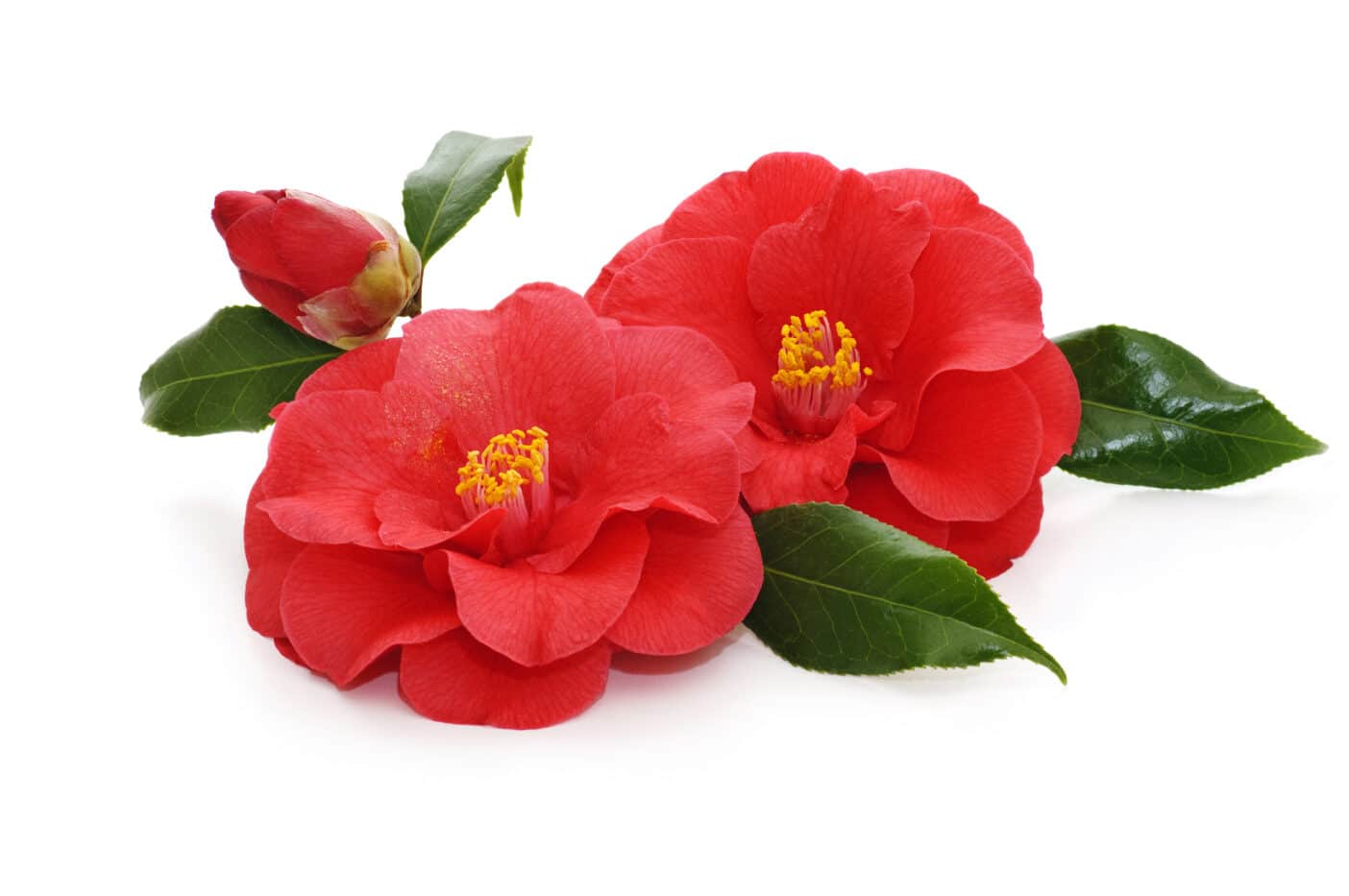Camellia oil

Camellia oil belongs from the camellia is a plant species that belongs to the tea shrub family. The pretty evergreen shrub or tree is mainly found in East Asia (Vietnam, southern China, Nepal, Korea and southern Japan) and can grow to be very old. In China there are some specimens that are said to be more than 1000 years old. Within Europe, the camellia only thrives in regions with a favourable climate: for example in southern Switzerland, Italy or the Upper Rhine, but also partly in north-western and western Germany. The oldest European camellias can be found in Dresden-Pillnitz, Caserta in Italy and Vila Nova de Gaia in Portugal and date back to the 18th century.
In 1753, the Swedish naturalist Carl von Linné named the camellia after the Moravian pharmacist and Jesuit priest Georg Joseph Kamel, who was mainly active in the Philippine capital of Manila. The camellia traditionally plays an important role in Asian tea and court ceremonies. In Japan, where it is called Tsubaki, it also symbolises transience and death. The reason: the delicate red petals, which appear between January and March, fall off individually and usually when there is still snow on the ground. On the snow-white ground, they then resemble small drops of blood.
Camellia oil has been extracted from the seeds of the camellia for a long time. The Japanese traditionally use it as corrosion protection and to care for valuable weapons and (kitchen) knives.
Camellia and its properties
Although camellia belongs to the tea shrub family, its oil should never be confused with tea tree oil. Camellia oil has a higher viscosity and differs significantly in terms of its ingredients and properties from tea tree oil, which is obtained from a completely different plant. Camellia oil comes to 80 per cent from the camellia species Camellia oleifera, whereas the seeds of the related species Camellia sinensis are rarely processed into oil. The oil is extracted by cold pressing. Camellia oil consists mainly of oleic acid, but also contains considerable amounts of palmitic acid, stearic acid, linoleic acid and gamma-linolenic acid. It also contains traces of vitamins A, C and E, which provide an antioxidant effect.
If we look at the fatty acid spectrum of camellia oil, it is noticeable that it is relatively similar to hazelnut oil, which is also valuable, but contains less linoleic acid. Due to the saturated fatty acids and oleic acid, camellia oil has a pleasantly smoothing effect. It is absorbed very well and can therefore also optimally channel any other active ingredients into the skin. In Asia and Japan in particular, it has long been recognised as an effective “beauty secret”. For example, it is traditionally part of the geisha’s beauty ritual.
Tsubaki and it benefits
Camellia oil is particularly suitable for high-quality natural cosmetics. It penetrates into the deeper layers of the skin and provides plenty of moisture. It can therefore effectively improve dry skin conditions and protect the skin from negative environmental influences. The linoleic acid it contains is also a component of the NMF (Natural Moisturising Factor), i.e. our skin’s moisturising system.
Although camellia oil is somewhat tougher and thicker than other oils, it does not leave behind an irritating greasy film. Thanks to its slightly anti-inflammatory effect, it is also suitable for blemished and oily skin, as it can prevent the formation of spots. Sensitive and irritated skin also benefits from the oil, as it reduces the formation of eczema and soothes irritation. When used regularly, camellia oil acts as a gentle anti-ageing booster. The skin becomes more elastic and supple and small wrinkles are barely noticeable. It also stimulates the regeneration of cells and protects them from dangerous free radicals.
Thanks to these numerous benefits, camellia oil is mainly recommended for high-quality skincare creams, oil-based serums and lotions. However, it is also ideal for cleansing the face and removing make-up residue. As the oil is extremely gentle, people with sensitive skin can also use it to cleanse their skin without any problems.
The secret of Japanese geishas
If we look at photographs of Japanese geishas, we are particularly struck by their healthy, shiny hair. No wonder: the women use camellia oil as an ancient beauty trick, as it nourishes and moisturises the hair. Using it as a hair treatment is particularly effective. Anyone who suffers from dry and dull hair will particularly appreciate the positive properties of the oil. If the scalp is sensitive or irritated, products containing camellia oil can be gently massaged into the roots.
High-quality camellia oil comes from sustainable organic cultivation. It should be free from chemical additives.
Profile of camellia oil
INCI: Camellia Oleifera Seed Oil
CAS number: 225233-97-6
Description: colourless and odourless
Extraction: by cold pressing from the seeds of the camellia tree
Main ingredients: around 80 per cent triglycerides of oleic acid, linoleic acid, palmitic acid, stearic acid, up to 1 % γ-linolenic acid, triterpenes
Effect: skin-smoothing, intensively nourishing and moisturising, reduces irritation
Camellia oil for high-quality cosmetic products
Camellia has long been a real beauty secret weapon for Asian women. Now it is also gaining ground here. And rightly so: the gentle oil is a real jack-of-all-trades, it cares for virtually every skin type, moisturises, smoothes, nourishes and protects. It is also very well tolerated. Ideal for dry, sensitive and irritated skin, it is also an excellent hair care oil. Cosmacon is happy to help you develop sophisticated cosmetic products with camellia oil. Please contact us.
Literature:
Effect of extraction solvents on antioxidant and skin-whitening potentials of defatted Camellia seed cakes; J.Kim, J. Kim, M. Kim